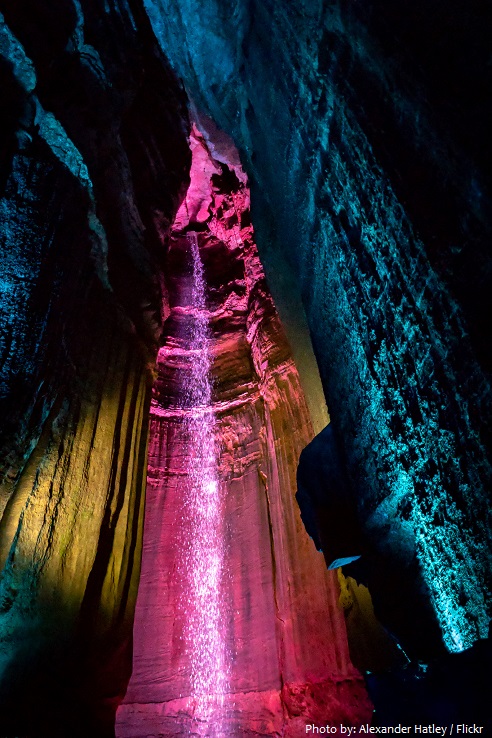Tennessee is a state located in the southeastern region of the United States.
It is bordered by Kentucky to the north, Virginia to the northeast, North Carolina to the east, Georgia, Alabama, and Mississippi to the south, Arkansas to the west, and Missouri to the northwest.
As of December 2018, the population of Tennessee was estimated to be about 6.7 million people. It is the 16th most populous state in the United States.
Tennessee is the 36th largest state in the United States in terms of total area with 109,247 square kilometers (42,143 square miles).
Nashville is the capital and most populous city of Tennessee. Named for Francis Nash, a general of the Continental Army during the American Revolutionary War, the city was founded in 1779.
Stretching 710 kilometers (440 miles) from east to west, Tennessee characterized by 6 main land regions; The Blue Ridge, the Appalachian Ridge and Valley Region, the Appalachian Plateau, the Highland Rim, the Nashville Basin, and the Gulf Coastal Plain.
The geographic diversity of Tennessee has generated a variety of economic, social, and cultural patterns that have led residents to perceive the state in terms of three “grand divisions”: East, Middle, and West Tennessee.
The highest point in the state is Clingmans Dome at 2,025 meters (6,643 feet) above sea level. Clingmans Dome, which lies on Tennessee’s eastern border, is the highest point on the Appalachian Trail, and is the third highest peak in the United States east of the Mississippi River.
Tennessee has 12 national park and 29 state parks.
Great Smoky Mountains National Park is located between Tennessee and North Carolina. The park is a UNESCO World Heritage Site that straddles the ridgeline of the Great Smoky Mountains, part of the Blue Ridge Mountains, which are a division of the larger Appalachian Mountain chain. It is the most visited national park in the United States.
As popular as the White House in Washington D.C., Graceland and the Elvis Presley Memphis Complex is considered the top attraction in Memphis. Undoubtedly the most famous rock ‘n’ roll residence in the world, Graceland Mansion remains a place of pilgrimage to fans from far and wide, and tours of this fine, stately home provide a unique glimpse into the King’s life (nothing has been changed since he passed away there in 1977).
The Grand Ole Opry is a weekly country music stage concert in Nashville, Tennessee founded on November 28, 1925, by George D. Hay as a one-hour radio “barn dance” on WSM. Currently owned and operated by Opry Entertainment (a division of Ryman Hospitality Properties, Inc.), it is the longest running radio broadcast in US history.
In 1928, Leo Lambert and a team of excavators found a breathtaking waterfall. Lambert named the falls after his wife, Ruby, and opened the area as a public attraction in 1930. Ruby Falls is located over 340 meters (1,120 feet) below the surface of Lookout Mountain in Chattanooga. Ruby Falls is a 44 meters (145 foot) high underground waterfall. Today, Ruby Falls welcomes thousands of visitors each year. Come tour the falls for yourself and see why this unique attraction has been one of the best things to do in Tennessee for over 80 years.
The first known European in the state was Spanish explorer Hernando de Soto, who arrived in 1540 in search of gold.
By the time Europeans returned to the area for further exploration in the 1700s, the principal indigenous groups were the Chickasaw, in the west, and the Cherokee, in the east.
The state of Tennessee is rooted in the Watauga Association, a 1772 frontier pact generally regarded as the first constitutional government west of the Appalachians.
Tennessee was admitted to the Union on June 1, 1796, as the 16th state.
Tennessee was the last state to leave the Union and join the Confederacy at the outbreak of the American Civil War in 1861.
Occupied by Union forces from 1862, it was the first state to be readmitted to the Union at the end of the war.
The earliest variant of the name that became Tennessee was recorded by Captain Juan Pardo, the Spanish explorer, when he and his men passed through an American Indian village named “Tanasqui” in 1567 while traveling inland from South Carolina. In the early 18th century, British traders encountered a Cherokee town named Tanasi (or “Tanase”) in present-day Monroe County, Tennessee.
Tennessee won its nickname as The Volunteer State during the War of 1812 when volunteer soldiers from Tennessee displayed marked valor in the Battle of New Orleans.







